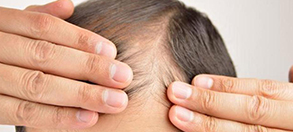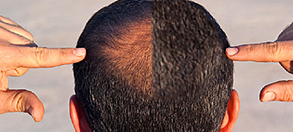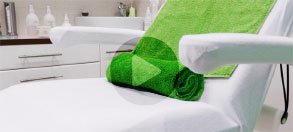Trichotillomania is an anxiety disorder that involves hair pulling. A person experiencing trichotillomania typically has an overwhelming urge to pull or twist hair until it either breaks off or comes out of the scalp. Hair typically thins over the scalp and bald spots can develop, but a person with trichotillomania continues to pull hair.
Contents
Causes
Chronic hair pulling is an impulse control disorder. Professionals have hypotheses about the causes of trichotillomania, but they do not have concrete evidence about the cause of the disorder. It’s possible that an immune deficiency may contribute to trichotillomania. Genetics may also be a factor in the onset of trichotillomania. Women are more likely to experience this hair-pulling disorder than men. Children may suffer these symptoms, as well. Up to 4 percent of the population may experience this disorder.
Symptoms
Symptoms typically begin during childhood, with most people showing an onset of symptoms prior to age 17. Pulling hair out does not hurt a person suffering from this disorder, so inflicting pain is not a motivation. Self-mutilation is also not a motivation of hair-pulling. Instead, a person suffering from trichotillomania is attempting to cope with anxiety, and the hair-pulling is a behavior that soothes uncomfortable feelings and calms tension. The severity of symptoms can vary, often related to the level of anxiety a person feels. Sometimes a person suffering from trichotillomania may be able to control the urge to pull hair by just concentrating on not pulling it. Other times, the urge to pull or twist hair may be so overpowering that the person cannot focus on anything else and the person cannot control the urge. The pattern of hair loss on the scalp could be round patches. Some people may experience long, bald areas across the scalp. Hair loss can also be an overall thinning over the entire scalp. Regardless of the hair-loss pattern, the effect is irregular hair growth with areas of scalp showing. Some people with trichotillomania also pull out their eyebrows, eyelashes, and hair from other areas of the body.
Children’s symptoms typically include:
- Uneven hair growth
- Thinning hair over the entire scalp or bald patches
- Intestinal blockages (due to eating the pulled hair)
- Continual playing with and pulling of hair
- Denial of hair-pulling when asked
- Stubble as hair begins to grow back in bald areas.
- Anxiety that builds and is then relieved by pulling hair
- Skin picking or other self-injurious behavior
- Pleasure from pulling hair
Children and adults with trichotillomania typically experience these issues:
- Sadness or depression
- Anxiety or stress
- Negative self-image and self-esteem
Examination and Testing
A professional can perform an examination to determine whether someone is suffering from trichotillomania. A health care professional would examine the hair and scalp, looking for thinning hair and bald patches. The professional may also examine the skin to determine whether skin-picking is also occurring. Nail-biting may also be present in someone suffering from trichotillomania. If the professional suspects another cause of the hair loss, a biopsy could diagnose another issue such as a scalp infection.
Treatment Options
Treatment options are available for treating the behavior. Some physicians prescribe naltrexone to help reduce the compulsive behavior. Serotonin selective reuptake inhibiting antidepressants are another common behavioral treatment. Both of these treatments are common with obsessive-compulsive disorders. Behavioral therapy can also be effective for reversing the habit of hair-pulling. Participating in a support group can be beneficial for resolving these behaviors for some people. Some professionals utilize a system of self-reporting with the person reporting episodes of hair-pulling to a therapist.
Prognosis
If a child develops trichotillomania prior to age 6, the behaviors may disappear without intervention. It’s common for symptoms to resolve within one year of onset. Other people may struggle with this psychological disorder for years or even a lifetime. With treatment, a person can learn new ways to respond to anxiety, which can help reverse the habit.
Complications
A serious complication can occur from hair-pulling if the person eats the hair, known as trichophagia. After eating hair, the hair may block the intestines. This blockage can cause poor nutrition.
Prevention
Early detection of the common symptoms of trichotillomania can prevent more serious problems. By recognizing and responding to symptoms, treatment can begin immediately. Providing assistance to cope with anxiety and stress may also help a person stop pulling hair. If a person learns how to manage anxiety in healthy ways instead of by pulling hair, the person can stop engaging in the compulsive behavior. Reducing overall stress can also help reduce the urge to pull hair.hair-pulling—trichotillomania


